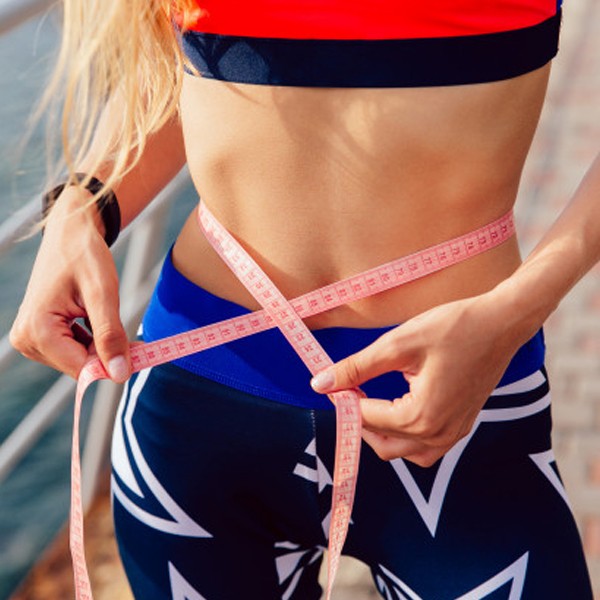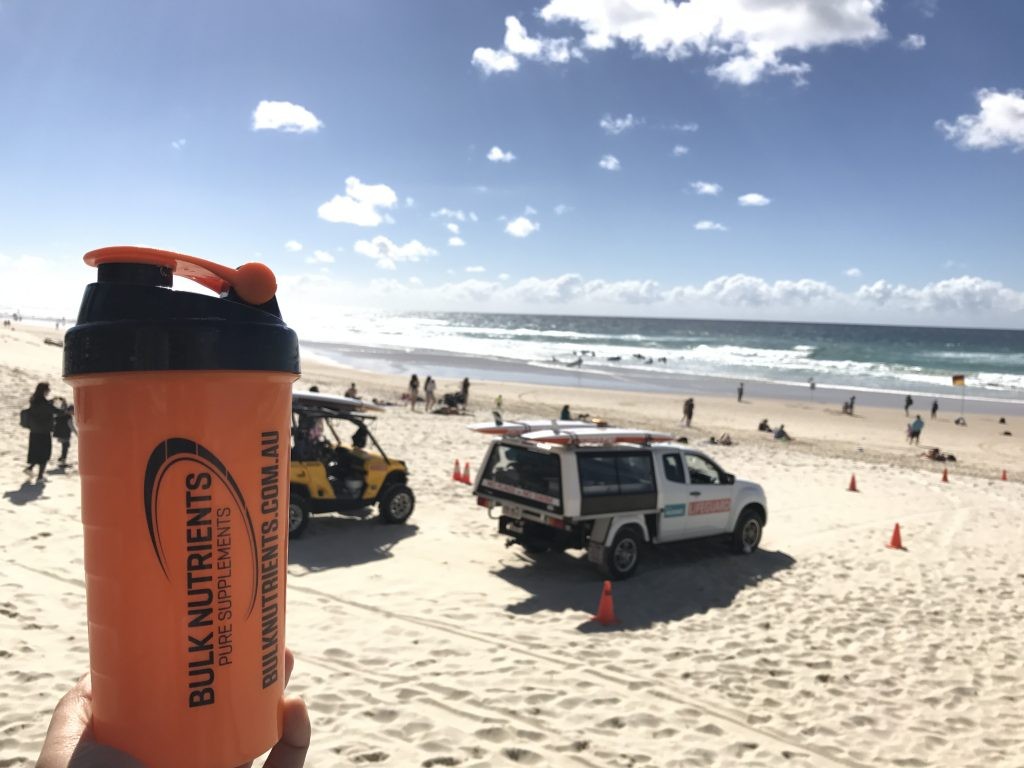
What's standing in the way of your weight loss goals?
Posted by Dayne Hudson
Estimated reading time: 7 minutes

When it comes to dropping fat and shaping your physique your first point of call should always be diet.
Too often I hear, “I eat healthy food, why can’t I lose weight?”.
Eating healthy, nutritious food has many benefits but if your goal is to lose weight it’s all about how much food (healthy or unhealthy) you’re putting in your body.
Calories in vs calories out, that’s all it is!
In my opinion, no foods are unhealthy unless you abuse them. I am a strong believer in moderation and flexible eating and I think eating fish and chips or a big pizza with the kids or friends is a great way to socialise and can be used as a reward for adhering to your diet every other day.
With all this in mind, let’s get started…

In order to start losing weight, you need to be eating in a caloric deficit
In order to determine your maintenance calories, you need to know your Basal Metabolic Rate (BMR). Your BMR is the amount of energy your body needs to survive and this can be determined using the Mifflin St. Jeor equation:
Men: BMR = 10 x weight(kg) + 6.25 x height(cm) – 5 x age(y) + 5
Women: BMR = 10 x weight(kg) + 6.25 x height(cm) – 5 x age(y) – 161
For example:
Ben is 80kg, 185cm tall and 23 years old.
BMR = 10 x weight(80kg) + 6.25 x height(185cm) – 5 x age(23) + 5= 1846 calories.
Once you have worked out your BMR, you need to work out your level of activity which is calculated using the Harris-Benedict equation.
Pick the category that suits your activity level per week…
Once you have this number simply multiply your body weight in kg by the category you picked.
For example, Ben is an 80kg male who goes to the gym for 1 hour, 4 times a week. He fits into the moderately active category. Multiply 80kg by 15= 1200 calories.
Once you have this number you can determine your maintenance calories by simply adding it to your BMR. Ben’s BMR is 1846 calories +1200= 3046 is Ben’s maintenance calories.

To start losing weight you need to slowly reduce your daily calorie intake
Now we know your body’s basic calorie needs with the BMR and we have worked out how much it needs to maintain weight with exercise, it’s time to find a deficit to help you lose weight.
Basically, we start cutting into this number, a good place to start is by cutting 300 calories per day from your maintenance level. It is important not to be greedy and slash heaps of calories straight away as this is a quick fix and is not sustainable. In short, be patient the results will come.
Example:
3046 is Ben’s maintenance calories, 3046-300 calories= 2746 calories
2750 calories is a good starting point, stick with this calorie deficit until your weight stalls consistently for a week.

Adding in additional cardio can help boost fat loss whenever your weight stalls
At some stage, during your weight loss journey, you’ll notice your weight loss stalling and again you have to adjust your calories.
Once your weight stalls you have two options:
I personally like to add in cardio as I am a foodie.
Get outdoors and do cardio you enjoy whether it’s tennis, soccer or walking the dog.
Note: Always choose the stairs and not the escalator!

So what exactly should you be eating? Well, now you need to break down your calories into the three macronutrients to ensure the best recovery, stamina and energy. These are the three macronutrients…
Protein is a key macronutrient and the driver for muscle growth.
Helms states “The minimum recommendation for an individual while in a caloric deficit is 2.3 g/kg”.
So for example:
80kg x 2.3= 184 grams of protein required per day.
Calories for protein 136x (4 calories) = 736 calories per day required.
A good starting point for fat is between 0.15-0.25 of your daily calorie goal. Whether you want to be at 0.15 or 0.25 is a personal preference.
Being in a fat loss diet I would go for a lower range, as you want a good amount of carbs to fuel your workouts!
Example:
Let’s go in the middle here at 0.20 of the daily calorie goal.
2750 calories divided by 5 = 550 calories.
As there are 9 calories in 1g of fat:
550 calories divided by 9 = 61g of fat per day.
Carbohydrates often get a bad rap, but when putting on muscle this macronutrient is essential as it’s the body’s optimal energy source.
Your daily intake of carbs can be found by adding the number of calories required from fats and protein. Protein (736 calories) + fats (550 calories)= 1286
From here you subtract the above number from 2750 (your calories required to lose weight).
Here’s how it’s done…
2750-1286 = 1464 calories required from carbohydrates. 1464 divided by 4= 366 grams of carbohydrates required each day.
Staggered by this number? Many people don’t realise that carbohydrates are your body’s number one source of energy and keeping your carbohydrate intake this high will make it a lot easier when the time comes to lose weight.
If you’re sensitive to carbohydrates you can raise your fats and or protein, but experiment with this number first and adjust where necessary. Just make sure these carbohydrates are mostly coming from complex sources such as rice, oats, sweet potato and vegetables.
Final Macronutrients for Ben:

Keeping track of your progress is key to success on your weight loss journey.
Am I just spinning my wheels backwards or am I making progress?
Taking photos, evaluating how your clothes feel, taking measurements, monitoring body weight on a scale and body composition are all great ways to check if you’re making progress.
For more detailed information on tracking your progress, take a look at my earlier blog post on how to track your progress.

With Bulk by your side, you’ll be hitting the beach with confidence in no time.
If you like me and don’t have much time meal prep - or even sit down and eat a proper meal - supplements are a great option to help you stay on track.
An easy meal on the go is a smoothie. Throw in some protein powder, carbs such as fruit and oats as well as your fats (peanut butter is great). I also use amino acids to keep the body hydrated and fuelled with protein.
My tip for hitting my protein goal is Future Whey Cola with soda water, but you can also sip on BCAAs too!
Once all these steps are in place, you will be well on your way to looking great this summer and starting the New Year off in the best shape of your life!
Struggle when eating out? Check out our guide to eating out at a restaurant without sacrificing your fitness goals.
Ben Disseldorp

Posted by Dayne Hudson
Estimated reading time: 7 minutes

Posted by Nicole Frain
Estimated reading time: 4 minutes

Posted by Nicole Frain
Estimated reading time: 4 minutes
With over 700 recipes and articles, the Bulk Nutrients Blog has something for everyone! Find a new workout, meet our ambassadors or take a deep dive into our products today.
We're an Australian manufacturer and supplier of high quality sports supplements.
Operating since 2008, Bulk Nutrients has become one of the premier Australian brands to supply nutritional products to top level athletes, competitors and those on a journey to a healthier lifestyle.
One thing that sets Bulk Nutrients apart is that we love to talk to our customers!
Whether you need product advice, help with the website or need a change made to your order... call us on +61 3 6266 4725.
If you prefer email you can email us day or night at info@bulknutrients.com.au
For online chat, hit the 'Chat' button in the bottom right hand corner of your screen and you'll be connected to one of our lovely customer service team.
Or if you'd like to get in touch through our online contact form, that's cool too!
Terms & ConditionsSustainability StrategyPrivacy PolicyPayment InformationSitemap
All prices are in Australian dollars (AUD) and include GST unless otherwise stated.
All content copyright © Bulk Nutrients 2008 - 2024